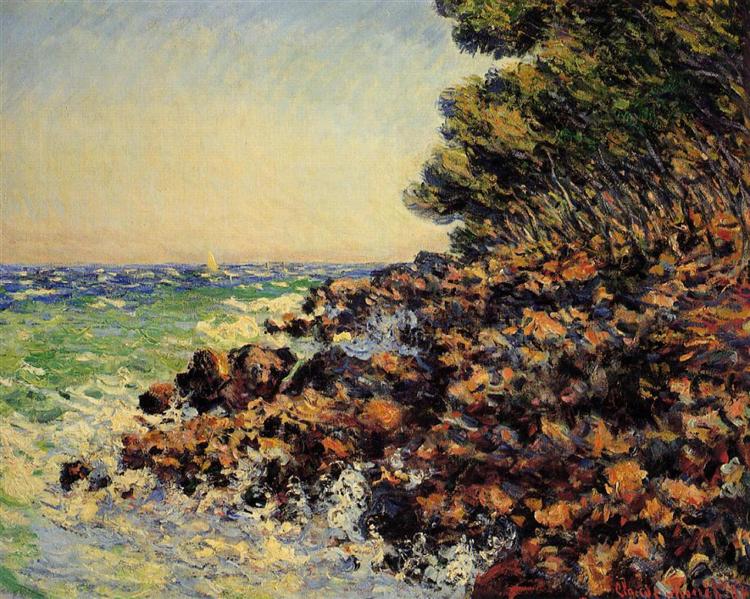Tanım
Claude Monet's painting "Cape Martin" (1884) stands as a brilliant testament to the Impressionist master's distinctive style, extraordinarily attentive to light, color and capturing nature in its most ephemeral state. Executed during one of his visits to the Côte d'Azur region, this work reveals Monet's admiration for the beauty of the Mediterranean landscape, a constant concern in his work during the 1980s, when he devoted himself to exploring new moments and variations of light.
From the first glance, one senses the vitality that springs from the vibrant palette Monet has used to reflect the complexity of the surroundings. The rich blue hues of the sea, contrasted with the creamy whites of the sky, create a luminous atmosphere that evokes the feeling of being drawn into the very heart of the landscape. Notably, the use of loose, rapid brushstrokes, characteristic of Impressionism, allows the viewer to perceive the light falling on the waters and shoreline almost in a tactile manner. This approach manifests itself in the way Monet conveys the movement of the water, bringing to life an almost palpable reality.
The composition is marked by the incorporation of natural elements that define the landscape. The rock formations in the foreground are depicted in shades of brown and grey, sprinkled with greenish flashes that suggest Mediterranean vegetation. The contours are blurred, a resource that Monet uses to synthesize the fusion between natural elements, so characteristic of the impressionist movement, where perspective and definition become sensorial interpretations. In the distance, a soft coastline is hinted at, establishing a dialogue with the horizon, intensifying the sensation of depth.
Although the work seems almost devoid of characters, the inclusion of a small boat, peacefully gliding through the waters, can be interpreted as a symbol of the interrelationship of humans with the vast natural landscape. This touch of humanity introduced by Monet serves to emphasize the serenity of the place, contrasting with the immensity of the sea and the sky. The presence of the boat, although subtle, suggests a sense of scale and allows one to contemplate the magnificence of the environment in contrast to the fragility of human existence.
Within the scope of his career, “Cape Martin” is part of a series of works where Monet seeks to capture the variations of light and color throughout the day and often over multiple painting sessions. The artist’s interest in nature and its changes is reflected not only in the vibrant use of color, but also in his committed process of observation and representation. This painting, in particular, is intertwined with the tradition of seascapes that have fascinated artists for centuries, but is distinguished by Monet’s intimate and personal interpretation.
Works such as Cape Martin are often associated with other pieces from his Provençal period, such as the Normandy House and Rouen Cathedral series, and are noted for their lyrical atmosphere and innovative use of light. Monet, at the turn of the 19th century, continued to demonstrate his mastery as the Impressionist movement evolved, confirming his position as one of the pillars of artistic modernity.
Ultimately, "Cape Martin" is more than a depiction of landscape; it is a dialogue between art and nature. Monet reveals his ability to encapsulate the transience of time, the reflection of light and the breath of life, always in motion and never fixed. It is a work that invites the viewer to immerse themselves in the splendid serenity of the Côte d'Azur, while pulsing the pulse of the ephemeral reality that the master so masterfully captured.
KUADROS ©, a famous painting on your wall.
Hand-made oil painting reproductions, with the quality of professional artists and the distinctive seal of KUADROS ©.
Painting reproduction service with satisfaction guarantee. If you are not completely satisfied with the replica of your painting, we will refund 100% of your money.

